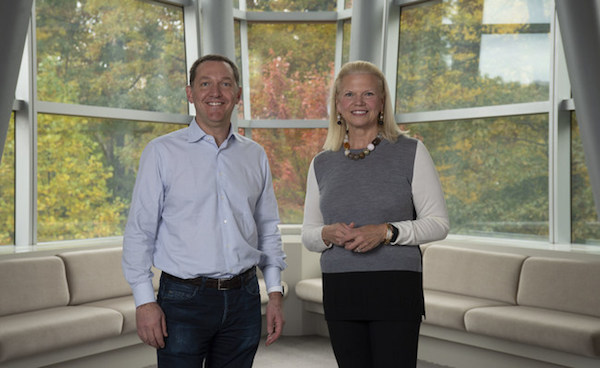 Unfortunately, good code won't speak for itself. Even the most elegantly designed and well-written codebase that solves the most pressing problem in the world won't just get adopted on its own. You, the open source creator, need to speak for your code and breathe life into your creation. That's where technical writing and documentation come in. A project's documentation gets the most amount of traffic, by far. It's the place where people decide whether to continue learning about your project or move on. Thus, spending time and energy on documentation and technical writing, focusing on the most important section, "Getting Started," will do wonders for your project's traction.
Unfortunately, good code won't speak for itself. Even the most elegantly designed and well-written codebase that solves the most pressing problem in the world won't just get adopted on its own. You, the open source creator, need to speak for your code and breathe life into your creation. That's where technical writing and documentation come in. A project's documentation gets the most amount of traffic, by far. It's the place where people decide whether to continue learning about your project or move on. Thus, spending time and energy on documentation and technical writing, focusing on the most important section, "Getting Started," will do wonders for your project's traction.
Kubernetes
See the following -
10 Major Open Source News Headlines in 2020
 Throughout this past year, we've shared top open source news to keep everyone updated on what's happening in the world of open source. In case you missed any of the headlines, catch up on 10 of the open source news events that grabbed our readers' attention in 2020...When COVID-19 was declared a pandemic in March, in-person conferences and events around the world came to a halt. Although many were canceled or postponed, others moved to virtual formats with massive early success, reports Correspondent Alan Formy-Duval in his May news roundup. More than 80,000 people attended Red Hat Summit 2020 online in April, and GitHub Satellite saw 40,000 tune in from 178 countries. These were some of the biggest virtual conferences anywhere in 2020.
Throughout this past year, we've shared top open source news to keep everyone updated on what's happening in the world of open source. In case you missed any of the headlines, catch up on 10 of the open source news events that grabbed our readers' attention in 2020...When COVID-19 was declared a pandemic in March, in-person conferences and events around the world came to a halt. Although many were canceled or postponed, others moved to virtual formats with massive early success, reports Correspondent Alan Formy-Duval in his May news roundup. More than 80,000 people attended Red Hat Summit 2020 online in April, and GitHub Satellite saw 40,000 tune in from 178 countries. These were some of the biggest virtual conferences anywhere in 2020.
- Login to post comments
18 Ways To Differentiate Open Source Products From Upstream Suppliers
 Successful open source products must be able to charge a cost that is sufficient to pay for the defrayed upstream open source contributions (development costs) and the downstream productization costs (vendor costs). Stated another way, products can only charge a sufficient price if they create value that can only be captured by customers paying for them. That might sound harsh, but it's a reality for all products. There's a saying in product management: Pray to pay doesn't work. With that said, don't be too worried. There are ethical ways to capture value.
Successful open source products must be able to charge a cost that is sufficient to pay for the defrayed upstream open source contributions (development costs) and the downstream productization costs (vendor costs). Stated another way, products can only charge a sufficient price if they create value that can only be captured by customers paying for them. That might sound harsh, but it's a reality for all products. There's a saying in product management: Pray to pay doesn't work. With that said, don't be too worried. There are ethical ways to capture value.
- Login to post comments
23 European Cloud Technology Companies form the European Cloud Industrial Alliance (EUCLIDIA)
 Today, 23 European companies have announced the creation of the European Cloud Industrial Alliance (EUCLIDIA) formed by independent European original technology manufacturers, for the promotion of digital independence and strategic autonomy...EUCLIDIA will carry the voice of European cloud technology innovators. Its members are all European-based with the majority of shareholders being European. Its mission is to provide lawmakers and policy makers with the field expertise and vision that will reinforce policies that accelerate the adoption and development of leading cloud technologies made in Europe. Such policies should reflect European values such as the protection of privacy and the promotion of fair competition while enabling European cloud industries to be competitive.
Today, 23 European companies have announced the creation of the European Cloud Industrial Alliance (EUCLIDIA) formed by independent European original technology manufacturers, for the promotion of digital independence and strategic autonomy...EUCLIDIA will carry the voice of European cloud technology innovators. Its members are all European-based with the majority of shareholders being European. Its mission is to provide lawmakers and policy makers with the field expertise and vision that will reinforce policies that accelerate the adoption and development of leading cloud technologies made in Europe. Such policies should reflect European values such as the protection of privacy and the promotion of fair competition while enabling European cloud industries to be competitive.
- Login to post comments
4 Big Ways Companies Benefit from Having Open Source Program Offices
 In the first article in my series on open source program offices, I took a deep dive into what an open source program office is and why your company might need one. Next I looked at how Google created a new kind of open source program office. In this article, I'll explain a few benefits of having an open source program office. At first glance, one big reason why a company not in the business of software development might more enthusiastically embrace an open source program office is because they have less to lose. After all, they're not gambling with software products that are directly tied to revenue...
In the first article in my series on open source program offices, I took a deep dive into what an open source program office is and why your company might need one. Next I looked at how Google created a new kind of open source program office. In this article, I'll explain a few benefits of having an open source program office. At first glance, one big reason why a company not in the business of software development might more enthusiastically embrace an open source program office is because they have less to lose. After all, they're not gambling with software products that are directly tied to revenue...
- Login to post comments
6 Ways Programmers from Underrepresented Countries Can Get Ahead
 Becoming a programmer from an underrepresented community like Cameroon is tough. Many Africans don't even know what computer programming is-and a lot who do think it's only for people from Western or Asian countries. I didn't own a computer until I was 18, and I didn't start programming until I was a 19-year-old high school senior, and had to write a lot of code on paper because I couldn't be carrying my big desktop to school. I have learned a lot over the past five years as I've moved up the ladder to become a successful programmer from an underrepresented community. While these lessons are from my experience in Africa, many apply to other underrepresented communities, including women.
Becoming a programmer from an underrepresented community like Cameroon is tough. Many Africans don't even know what computer programming is-and a lot who do think it's only for people from Western or Asian countries. I didn't own a computer until I was 18, and I didn't start programming until I was a 19-year-old high school senior, and had to write a lot of code on paper because I couldn't be carrying my big desktop to school. I have learned a lot over the past five years as I've moved up the ladder to become a successful programmer from an underrepresented community. While these lessons are from my experience in Africa, many apply to other underrepresented communities, including women.
- Login to post comments
A Better Marketing Plan for Your Open Source Software Project
 OSS marketing has evolved since the emergence of OSS in the 1990s and early 2000s. It now includes the community at every step of the life cycle (a fact that shouldn’t surprise anyone familiar with open source communities’ expectations for inclusivity). It also outperforms traditional command-and-control approaches to marketing, because it’s built on the strength and reach of project communities. A community that’s bought into a marketing program will generate far more content than a marketing team alone can. We aim here to describe a process for inclusive marketing that any technology marketer can apply to increase impact.
OSS marketing has evolved since the emergence of OSS in the 1990s and early 2000s. It now includes the community at every step of the life cycle (a fact that shouldn’t surprise anyone familiar with open source communities’ expectations for inclusivity). It also outperforms traditional command-and-control approaches to marketing, because it’s built on the strength and reach of project communities. A community that’s bought into a marketing program will generate far more content than a marketing team alone can. We aim here to describe a process for inclusive marketing that any technology marketer can apply to increase impact.
- Login to post comments
A Tour of Google's 2016 Open Source Releases
 Open source software enables Google to build things quickly and efficiently without reinventing the wheel, allowing us to focus on solving new problems. We stand on the shoulders of giants, and we know it. This is why we support open source and make it easy for Googlers to release the projects they're working on internally as open source. We've released more than 20-million lines of open source code to date, including projects such as Android, Angular, Chromium, Kubernetes, and TensorFlow. Our releases also include many projects you may not be familiar with, such as Cartographer, Omnitone, and Yeoman...
Open source software enables Google to build things quickly and efficiently without reinventing the wheel, allowing us to focus on solving new problems. We stand on the shoulders of giants, and we know it. This is why we support open source and make it easy for Googlers to release the projects they're working on internally as open source. We've released more than 20-million lines of open source code to date, including projects such as Android, Angular, Chromium, Kubernetes, and TensorFlow. Our releases also include many projects you may not be familiar with, such as Cartographer, Omnitone, and Yeoman...
- Login to post comments
Don't Believe the Hype, AGPL Open Source Licensing Is Toxic and Unpopular
Reading Black Duck Software's newest paean to the Affero General Public License (AGPL) ("The Quietly Accelerating Adoption of the AGPL"), one could be forgiven for thinking AGPL is rocking the open source licensing planet. After all, Black Duck executive Phil Odence laced his post with fancy charts showing explosive growth of the license, ultimately declaring the AGPL "very popular," and a license his firm sees frequently in audits. Maybe, maybe not...
- Login to post comments
Edge computing and the importance of open infrastructure
 The "edge" is diverse, dispersed, often independently owned and operated, and comes with a set of constraints not addressed in the average data center. Old sci-fi films painted a picture of how computers would permeate every facet of life in the future. It has come to pass, and it happened almost without us noticing: having PCs at home became commonplace, our mobile phones turned into small smart devices, and our cars began making decisions for us, controlled by thousands of sensors and controllers. Self-driving cars, augmented and virtual reality, smart homes and more all underscore our rapidly emerging dependence on distributed computing infrastructure.
The "edge" is diverse, dispersed, often independently owned and operated, and comes with a set of constraints not addressed in the average data center. Old sci-fi films painted a picture of how computers would permeate every facet of life in the future. It has come to pass, and it happened almost without us noticing: having PCs at home became commonplace, our mobile phones turned into small smart devices, and our cars began making decisions for us, controlled by thousands of sensors and controllers. Self-driving cars, augmented and virtual reality, smart homes and more all underscore our rapidly emerging dependence on distributed computing infrastructure.
- Login to post comments
Hot Programming Trends from 2016
 Technology is constantly moving forward—well, maybe not always forward, but always moving. Even for someone who keeps an eye on the trends and their effect on programmers, discerning exactly where things are headed can be a challenge. My clearest glimpse into open source programming trends always comes in the fall when I work with my fellow chairs, Kelsey Hightower and Scott Hanselman, and our fantastic programming committee to sculpt the coming year's OSCON (O'Reilly Open Source Convention). The proposals that we get and the number focused on specific topics turn out to be good indicators of hot trends in the open source world. What follows is an overview of the top programming trends we saw in 2016...
Technology is constantly moving forward—well, maybe not always forward, but always moving. Even for someone who keeps an eye on the trends and their effect on programmers, discerning exactly where things are headed can be a challenge. My clearest glimpse into open source programming trends always comes in the fall when I work with my fellow chairs, Kelsey Hightower and Scott Hanselman, and our fantastic programming committee to sculpt the coming year's OSCON (O'Reilly Open Source Convention). The proposals that we get and the number focused on specific topics turn out to be good indicators of hot trends in the open source world. What follows is an overview of the top programming trends we saw in 2016...
- Login to post comments
How Open Source Is Changing the Pace of Software Development
...as new computing architectures and approaches rapidly evolve for cloud computing, for big data, for the Internet of Things (IoT), it's also becoming evident that the open source development model is extremely powerful because of the manner in which it allows innovations from multiple sources to be recombined and remixed in powerful ways. Consider the following examples...
- Login to post comments
How Time-series Databases Help Make Sense of Sensors
 Infrastructure environments' needs and demands change every year and systems become more complex and involved. But all this growth is meaningless if we don't understand the infrastructure and what's happening in our environment. This is where monitoring tools and software come in; they give operators and administrators the ability to see problems in their environments and fix them in real time. But what if we want to predict problems before they happen? Collecting metrics and data about our environment gives us a window into how our infrastructure is performing and lets us make predictions based on data. When we know and understand what's happening, we can prevent problems, rather than just fixing them...
Infrastructure environments' needs and demands change every year and systems become more complex and involved. But all this growth is meaningless if we don't understand the infrastructure and what's happening in our environment. This is where monitoring tools and software come in; they give operators and administrators the ability to see problems in their environments and fix them in real time. But what if we want to predict problems before they happen? Collecting metrics and data about our environment gives us a window into how our infrastructure is performing and lets us make predictions based on data. When we know and understand what's happening, we can prevent problems, rather than just fixing them...
- Login to post comments
How To Write Effective Documentation For Your Open Source Project
- Login to post comments
IBM To Acquire Red Hat, Completely Changing The Cloud Landscape And Becoming World's #1 Hybrid Cloud Provider
 IBM and Red Hat the world's leading provider of open source cloud software, announced today that the companies have reached a definitive agreement under which IBM will acquire all of the issued and outstanding common shares of Red Hat for $190.00 per share in cash, representing a total enterprise value of approximately $34 billion...."The acquisition of Red Hat is a game-changer. It changes everything about the cloud market," said Ginni Rometty, IBM Chairman, President and Chief Executive Officer. "IBM will become the world's #1 hybrid cloud provider, offering companies the only open cloud solution that will unlock the full value of the cloud for their businesses.
IBM and Red Hat the world's leading provider of open source cloud software, announced today that the companies have reached a definitive agreement under which IBM will acquire all of the issued and outstanding common shares of Red Hat for $190.00 per share in cash, representing a total enterprise value of approximately $34 billion...."The acquisition of Red Hat is a game-changer. It changes everything about the cloud market," said Ginni Rometty, IBM Chairman, President and Chief Executive Officer. "IBM will become the world's #1 hybrid cloud provider, offering companies the only open cloud solution that will unlock the full value of the cloud for their businesses.
- Login to post comments
Linux Foundation Chief: Businesses That Don't Use Open Source 'Will Fail'
 Open source took center stage at the final keynote address of the 2017 Google Cloud Next conference on Friday, where tech leaders presented on the importance of openness in tech and business. The focus on open source was highlighted in an address from Linux Foundation executive director Jim Zemlin, who claimed that organizations that "don't harvest the shared innovation" of open source "will fail." Open is the new economic norm in tech and business, Zemlin said, as "all of us are smarter than any one of us"...
Open source took center stage at the final keynote address of the 2017 Google Cloud Next conference on Friday, where tech leaders presented on the importance of openness in tech and business. The focus on open source was highlighted in an address from Linux Foundation executive director Jim Zemlin, who claimed that organizations that "don't harvest the shared innovation" of open source "will fail." Open is the new economic norm in tech and business, Zemlin said, as "all of us are smarter than any one of us"...
- Login to post comments